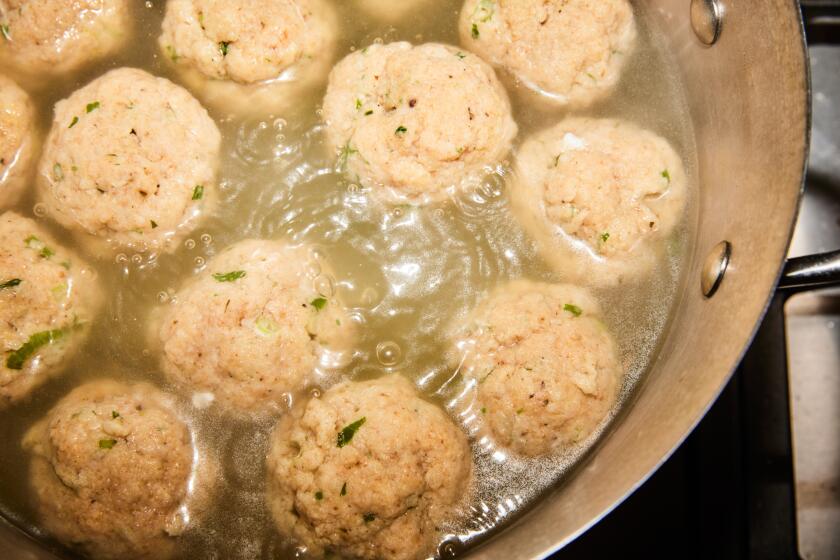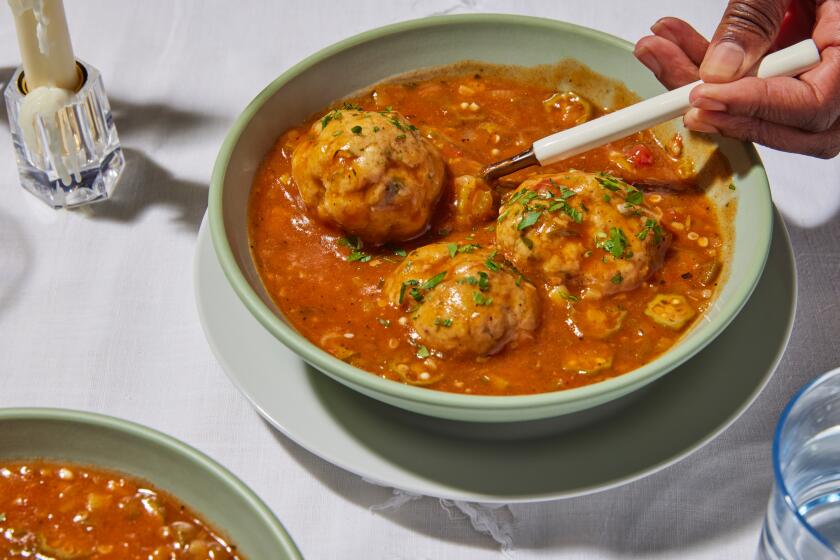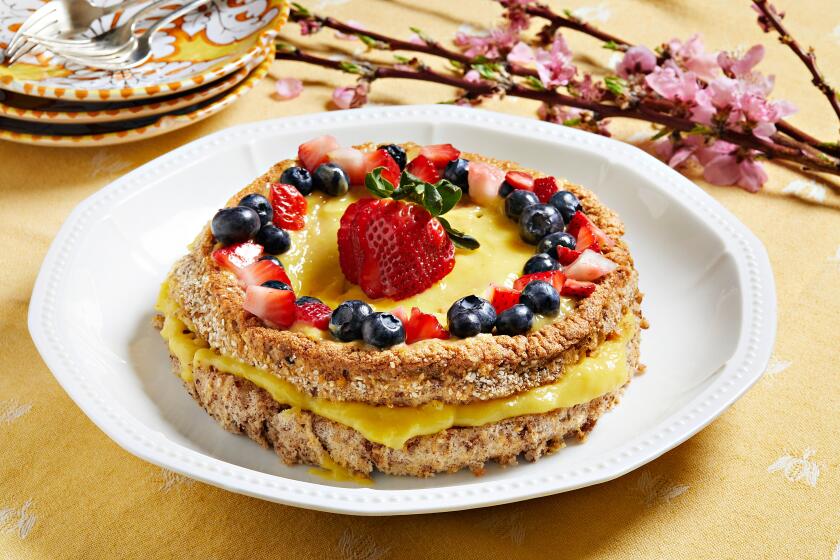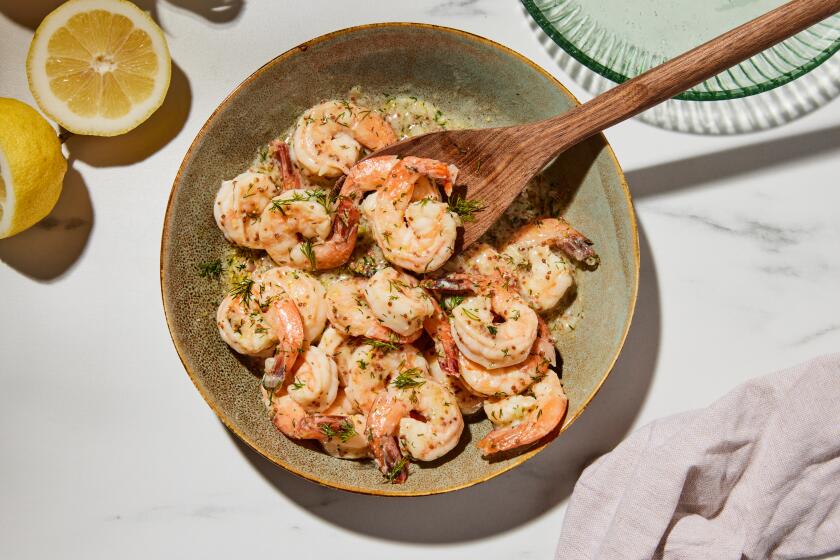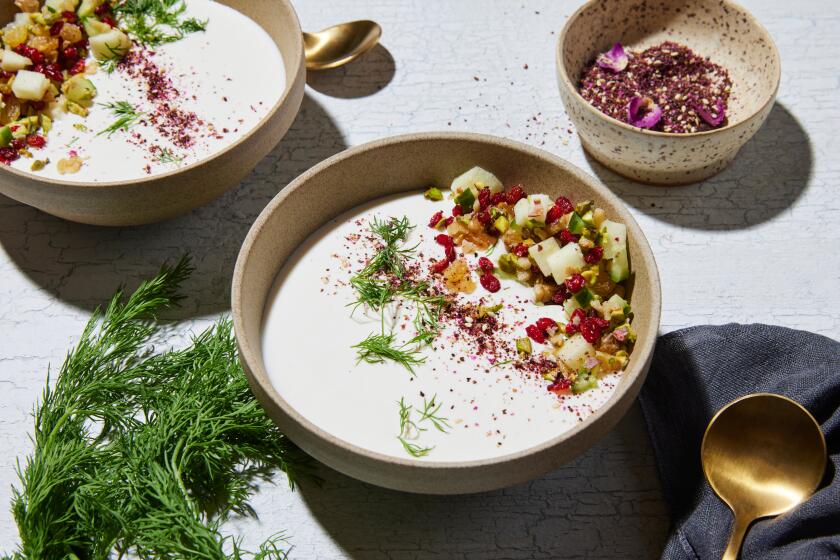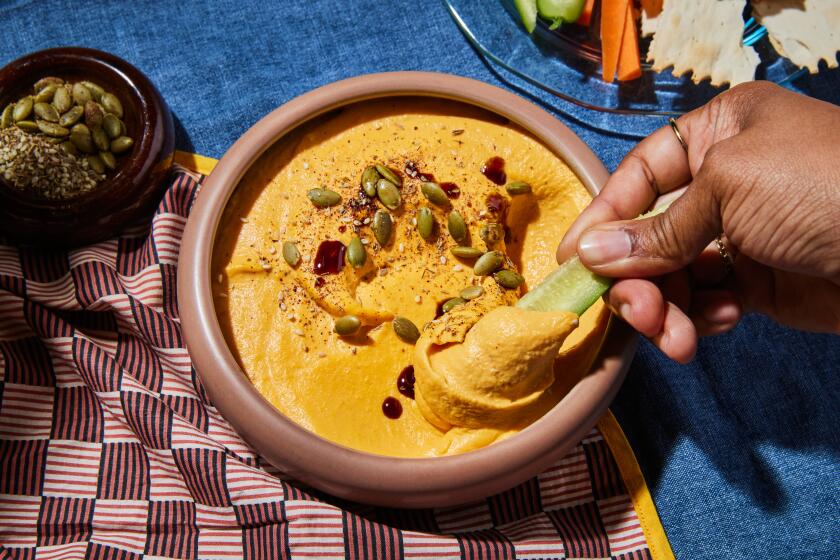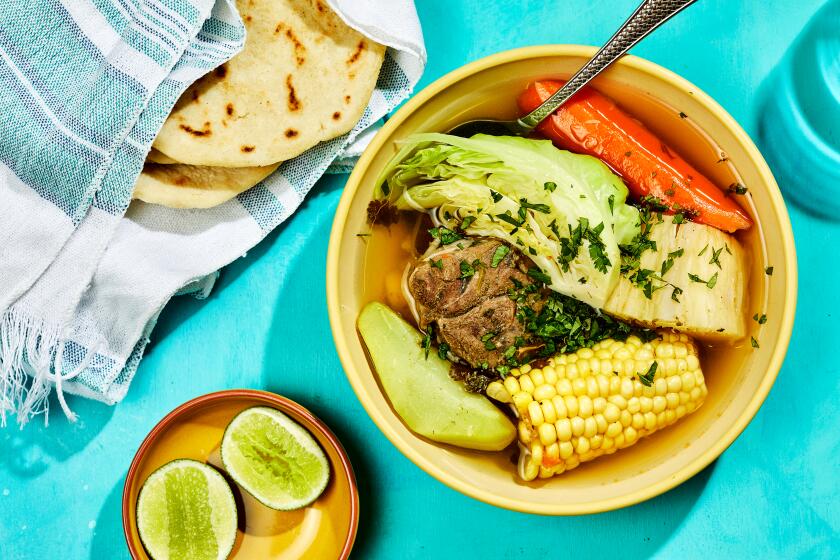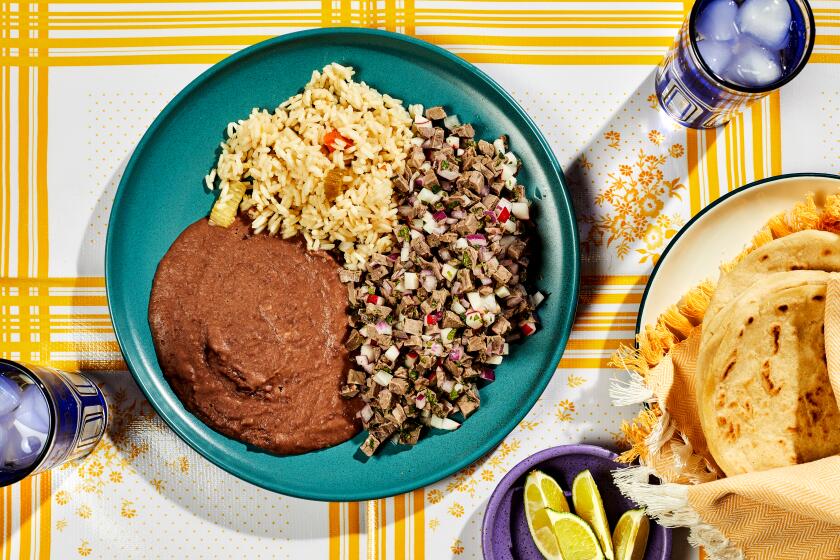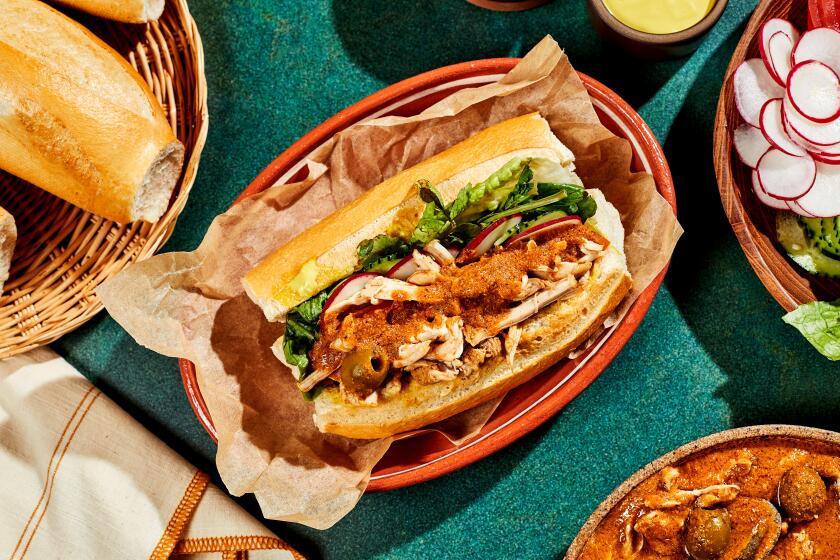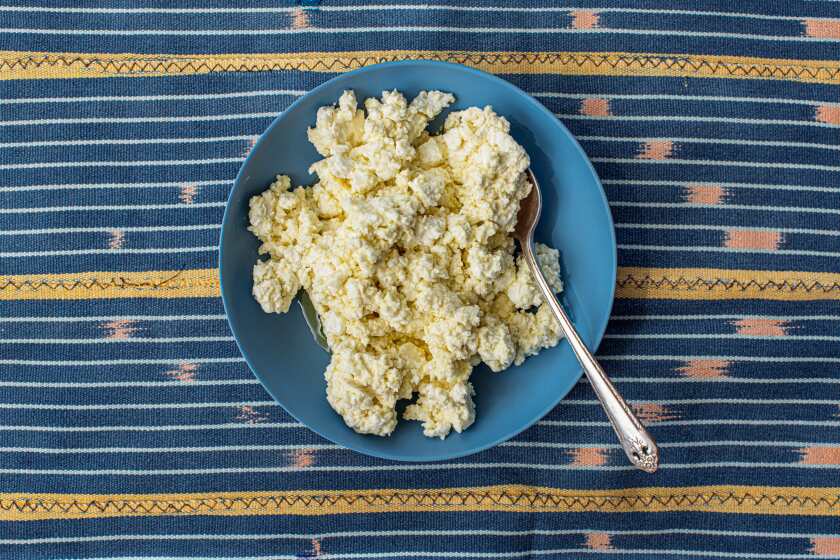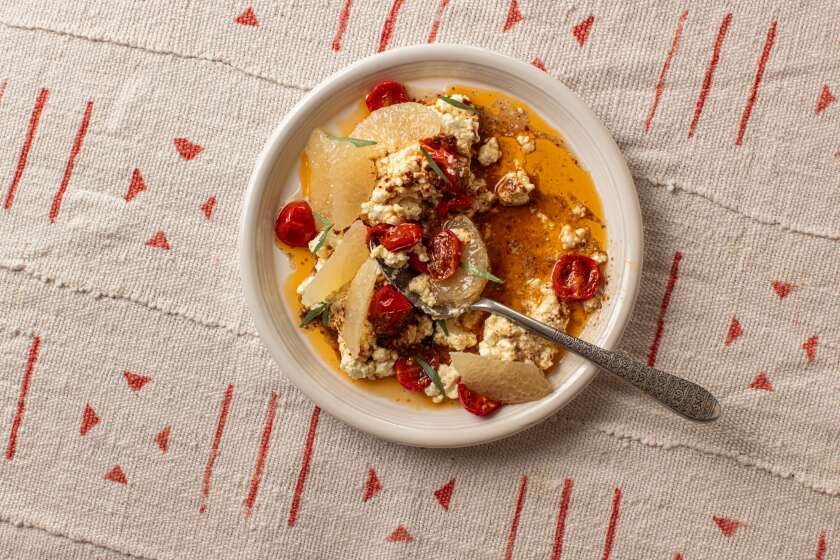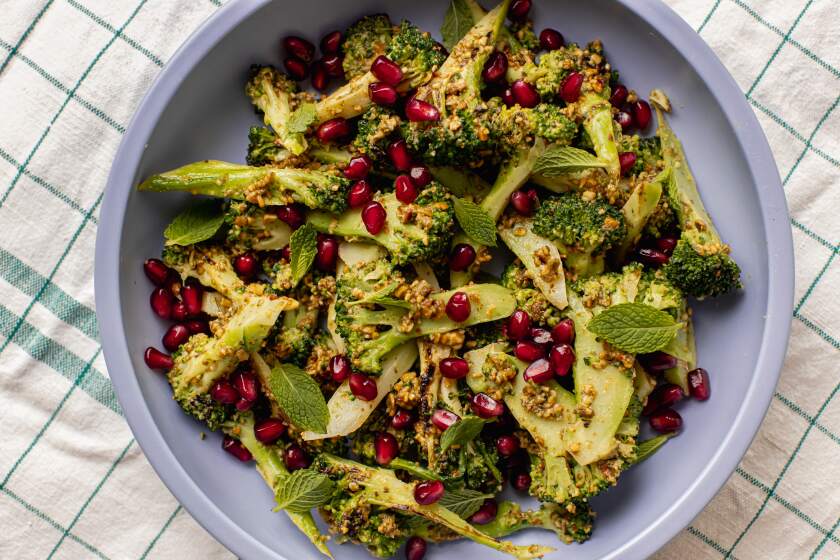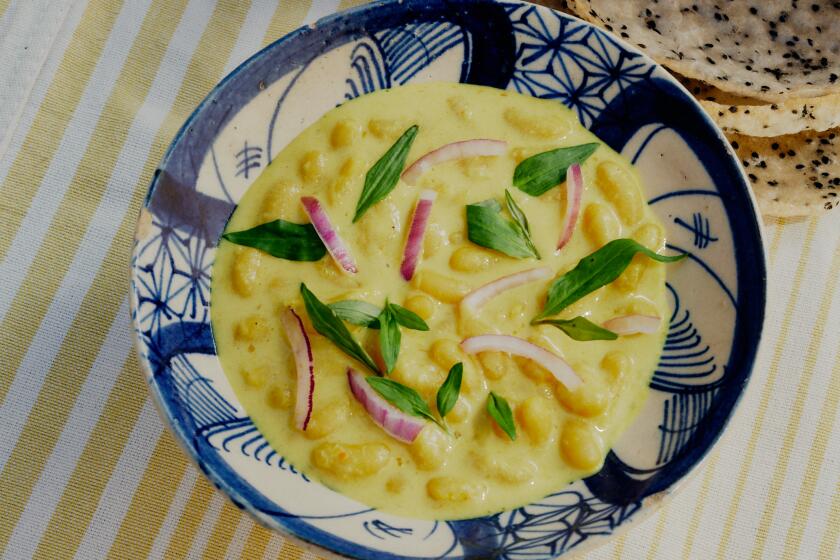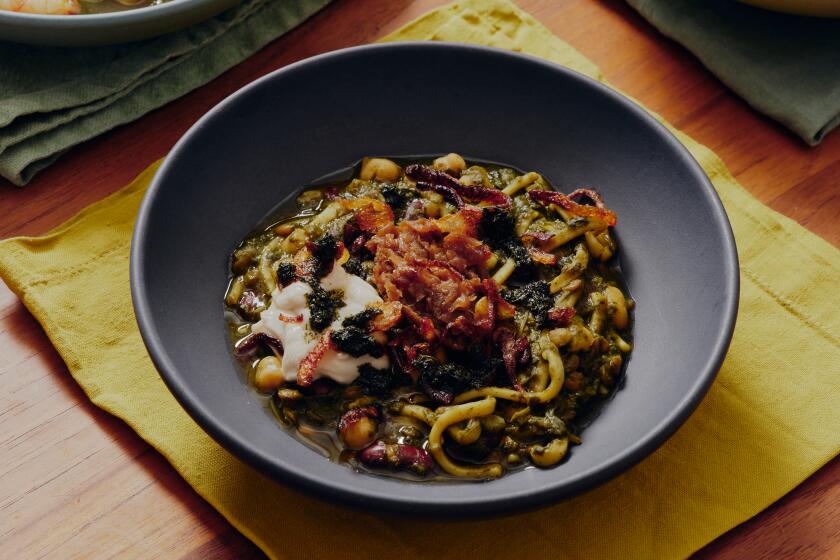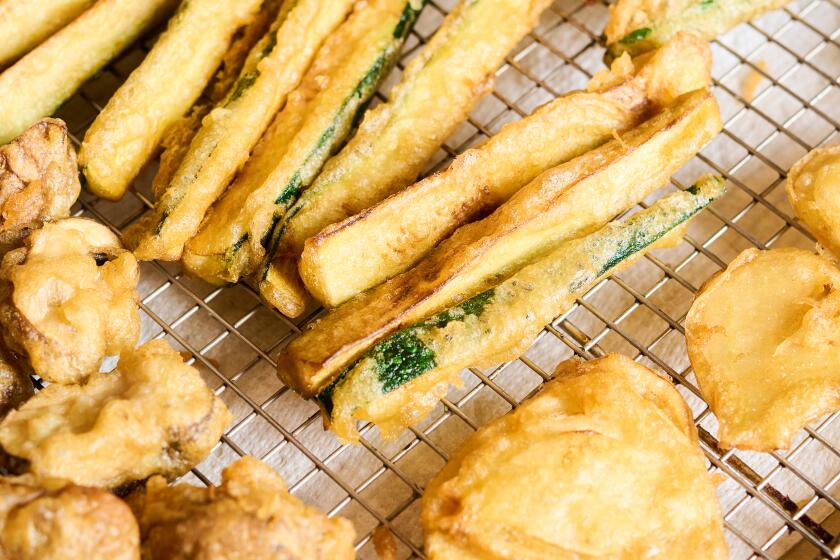Steamed artichoke with egg aioli and onion-sorrel salad
A coddled Maran egg served in its dark-chocolate-colored shell, a sunny-side-up duck egg nestled into a salad, a slowly, slowly cooked egg -- with its yolk bright and creamy and the white barely opaque and tender -- dropped into a steaming bowl of noodle soup.
At long last, chefs are celebrating the egg. They’re just as likely to highlight a beautiful, starkly simple egg in a dish as they would braised pork belly or smoked eel or hamachi sashimi. Chefs love eggs not just for the emulsifiers in their yolks or the way their whites can be transformed into billowy foam, but as a luxury ingredient on their own.
And not just white eggs, brown eggs or those popular Araucana blue-green eggs. They’ve cracked open all kinds of farm fresh eggs -- dappled turkey eggs, big duck eggs, tiny quail eggs, “heirloom” eggs from French or Egyptian chicken breeds -- that have been raised locally (and increasingly are available at farmers market stands).
Eggs’ new currency may be thanks to one egg in particular: the 65-degree egg. Eggs cooked at a very low temperature -- 65 degrees Celsius (149 degrees Fahrenheit) -- for a long time have been the subject of much discussion in culinary circles around the world.
French molecular gastronomist Herve This dubbed it l’oeuf a soixante-cinq degres, “the egg at 65 degrees,” and wrote about it in his 2002 correspondence with Michelin three-star chef Pierre Gagnaire. (The letters, which begin “Mon cher Pierre,” are posted on Gagnaire’s website, www.pierregagnaire.com.) The idea seems to have reverberated from there.
Wylie Dufresne of WD-50 in New York has served his slow-cooked eggs (an immersion circulator used for cooking sous vide comes in handy) in a bowl with Parmigiano broth, Indian chickpea noodles, tomato powder and micro chives.
“It’s a chef obsession of the moment,” Lucques and A.O.C. chef-owner Suzanne Goin says of slow-cooking eggs. “We’ve been playing around with a slow-cooking egg technique.... We had trouble figuring it out. When you crack them open, at first you think they’re undercooked. The white where it meets the shell is not firm.”
But, properly executed, it’s a delicious, custardy egg, the yolk bright and creamy and the whites tender and almost pudding-like -- an egg lover’s egg.
Gently cooked
It’s a technique Goin says she recently heard about from Border Grill co-owner Mary Sue Milliken (who said she learned of it from food writer Paula Wolfert, among others). Milliken says she lays an inverted saucer in a saucepan (so the bottom doesn’t get too hot), places a layer of eggs from the refrigerator onto the saucer, pours boiling water over them, sticks a thermometer in, and once the temperature gets down to 145 degrees, maintains that temperature for at least 45 minutes. It’s tricky keeping the temperature constant at such a low setting. (For those without a super-low setting on their stove, it means turning the heat on and off.)
It’s similar to what chef David Chang does with his eggs at wildly popular Momofuku Noodle Bar in New York. He says his is “like a perfect poached egg, a little more viscous, a little runnier.” His technique is based on an ancient Japanese method for onsen eggs, traditionally cooked in hot springs. “It’s the one egg method that the Japanese probably created before the French,” he says.
Chang, who cooks dozens of eggs a day to add to his noodle soups or to spring dishes such as pan-roasted asparagus with miso butter or pickled and roasted ramps with bacon, says his onsen-style eggs add a luxurious mouth-feel to a dish. “A lot of our dishes don’t have dairy, but the creaminess of the eggs makes a natural luxury sauce,” he says.
But the slow-cooked egg isn’t the only one showing up on menus. Soft-boiled, coddled, poached or lightly fried -- fabulous eggs, with their distinct whites and yolks, have also captivated chefs.
David Kinch at Manresa in Los Gatos, Calif., has long served as an amuse bouche a coddled egg served in the shell with maple syrup, sherry vinegar and a little whipped cream, based on an egg that French chef Alain Passard serves at L’Arpege, his restaurant in Paris. Kinch’s eggs are from a new flock of about 75 chickens raised at his restaurant garden in the Santa Cruz Mountains.
At Ame restaurant in the St. Regis Hotel in San Francisco, Hiro Sone tops a tangle of spaghetti and tender, young rapini with a sunny-side-up egg, showered with bottarga (dried tuna roe). Soon after he puts the eggs in the hot pan, just when the edges begin to foam and color, he adds a little water and covers them, allowing the steam to barely cook the top of the egg.
“The idea is to mix it all together,” Sone says, “the warm egg yolk into the pasta. So when you cook the egg, make sure the yolk remains runny.”
Nancy Silverton loves a runny yolk too. At Mozza, she makes a pizza topped with guanciale, radicchio and her bagna cauda (a warm mix of butter, olive oil, garlic, anchovies and lemon), and an egg right in the middle. She cracks an egg into a ramekin and sets it next to the wood-burning pizza oven; it’s poured on top of the pizza as it goes into the oven, where it cooks just long enough. It’s the only pizza that arrives at the table unsliced. When you cut into it, the liquid-gold yolk mixes in with the other ingredients in a luscious mess.
Of the slow-cooked eggs Goin has been experimenting with, she says she served them for Valentine’s Day with grilled asparagus, jamon serrano, mustard vinaigrette and shaved Parmigiano.
Recently on her menu at Lucques were soft-cooked duck eggs (chicken eggs when she can’t get duck eggs) boiled for 7 minutes -- a little longer than Escoffier’s oeuf mollet -- and then immediately placed in ice water. The eggs are warmed up again after they’re peeled and then tucked into a salad of dandelion greens, Treviso radicchio, Tavoliere cheese and toasted pepitas. And always on the menu at A.O.C. is brioche with prosciutto, cave-aged Gruyere and egg baked in the wood-burning oven and topped with frisee and parsley and green onions. “The egg actually is fried in the oven,” Goin says. “It’s a morph of frisee lardon salad and a croque madame.
“I love eggs. I would put eggs on everything if it wouldn’t look weird on the menu,” Goin says.
Words don’t seem to exist to parse the flavor of an egg. The best eggs are fresh from chickens that are fed a varied diet and can scratch and peck all day in the open air. They taste eggier, with richer, more flavorful yolks that stand tall and are not so much yellow as orange.
*
Pretty, delicious
“Taste is a function of what you feed them,” says grower Cynthia Sandberg, who also raises chickens at Love Apple Farm, where she also grows vegetables exclusively for Manresa. “They get all the scraps from Manresa -- onions, citrus, lettuce -- and everything we cut off at the farm, if I’m cutting back my herb garden or vegetable garden. All of those things can alter the taste of the egg.” She raises several breeds such as Black Australorp, Jersey Giants and Marans, which lay those beautiful, dark chocolate brown eggs.
“I choose the breeds a lot like I choose tomatoes, and I’m a big tomato freak,” Sandberg says.
In Southern California, farmers market eggs are making a big showing -- brown eggs, green eggs, eggs marked sprout-fed, chicken eggs, duck eggs, quail eggs and the occasional goose and turkey eggs. This is the time of year when the chickens are getting going. “With more daylight, all 300 of my chickens will start laying,” says Peter Schaner of Schaner Farms. “I’ll have more for the table [at the farmers market] and the restaurants.”
At Literati II, chef Chris Kidder goes through 800 eggs a week and gets some of them from Skyline Organic Farm. “The yolks are richer and darker in color,” Kidder says. “It’s a rich, dense egg. It’s great for making egg-rich pasta like our pappardelle, and I use them for specialty items.”
One of his specialty dishes is an artichoke -- a gorgeous, huge artichoke -- served with a unique aioli, made with egg yolks but which also highlights gently boiled medium-cooked eggs. It’s less garlicky than a traditional aioli. Kidder makes it with a mortar and pestle, then roughly chops the boiled eggs and mixes them in. The process takes a long time, but it’s worth it for egg fanatics who love the consistency that you get only by making it by hand -- creamy and dense.
“It is sort of similar to a sauce gribiche, which uses cooked eggs, or a salsa rustica that adds chopped eggs to a salsa verde,” Kidder says.
Sone of Ame in San Francisco uses either jidori eggs (jidori refers not to a particular breed of bird; it’s Japanese for free-range chickens), from purveyor International Marine Products or eggs from a source in Napa, El Molino Vineyards. El Molino co-owner Lily Oliver raises breeds such as the Araucana and the Maran, as well as Egyptian Fayoumis.
Oliver is serious about her eggs. “If I gave you a dozen eggs as a gift, and you told me you scrambled them, then I would be disappointed,” she says. “I’d want to know you enjoyed at least some of them fried or poached. I’d want you to crack into the orange yolk (they shouldn’t be yellow) and say, ‘Wow, those eggs are good.’ ”
Artichokes
Bring a large pot of salted water to boil. With a sharp knife, trim the bottom of each artichoke so that the artichoke can stand up. Using kitchen scissors, trim the tips of the leaves. Place the artichokes in the boiling water and simmer over high heat for about 15 to 20 minutes (depending on the size) or until they are tender when inserting a knife. Place in a bowl of ice water to cool. Drain well.
Clean out the choke by removing the center ring of leaves and with a spoon gently removing the small hairs attached to the heart. The artichokes may be refrigerated for up to 24 hours and reheated by boiling them for a few minutes before serving.
Aioli
Place 1 egg in a small pot of boiling water and boil gently for 8 1/2 minutes. Cool in a bowl of ice water for 10 minutes.
Peel the egg, chop into half-inch pieces and set aside.
Take the remaining egg and separate the yolk from the white, placing the yolk in a mortar (discard the white). Place the canola oil in a spouted measuring cup. With the pestle, whip a little bit of air into the yolk and with the other hand drizzle in a few drops of canola oil. Add the vinegar. Add the remaining canola oil and the olive oil while moving the pestle around until the mixture thickens. Add the garlic, chopped egg and one-fourth teaspoon salt. Chill.
Onion salad and assembly
Peel the onion and quarter it from root end to stem end. Take the quarters and separate them into groups of 4 or so sections. This will enable you to flatten the onion on the cutting board and cut it into very thin slices. Slice the onion very thinly and place the slices in a bowl of ice water. Allow to sit for 10 minutes. Drain.
Cut the sorrel leaves crosswise into half-inch strips and chop the stem. In a bowl, toss the onions and sorrel and splash with the vinegar, olive oil, salt and pepper.
To serve, place a warm artichoke on each plate. Sprinkle the inside of each half with fleur de sel. Divide the onion salad among the 4 plates and place a small bowl of about one --eighth to one-fourth cup aioli on the side of each.
Get our Cooking newsletter.
Your roundup of inspiring recipes and kitchen tricks.
You may occasionally receive promotional content from the Los Angeles Times.


